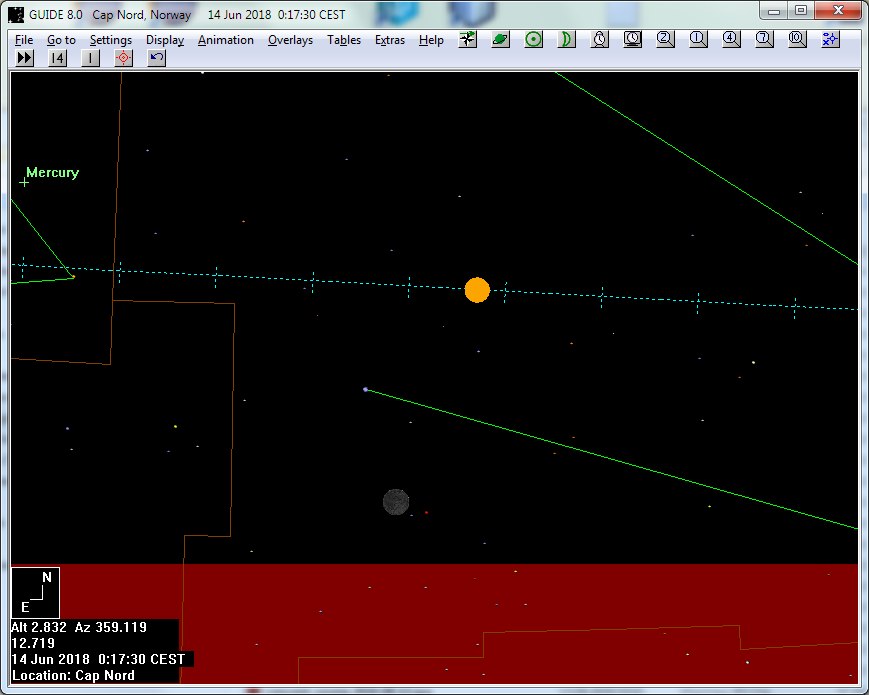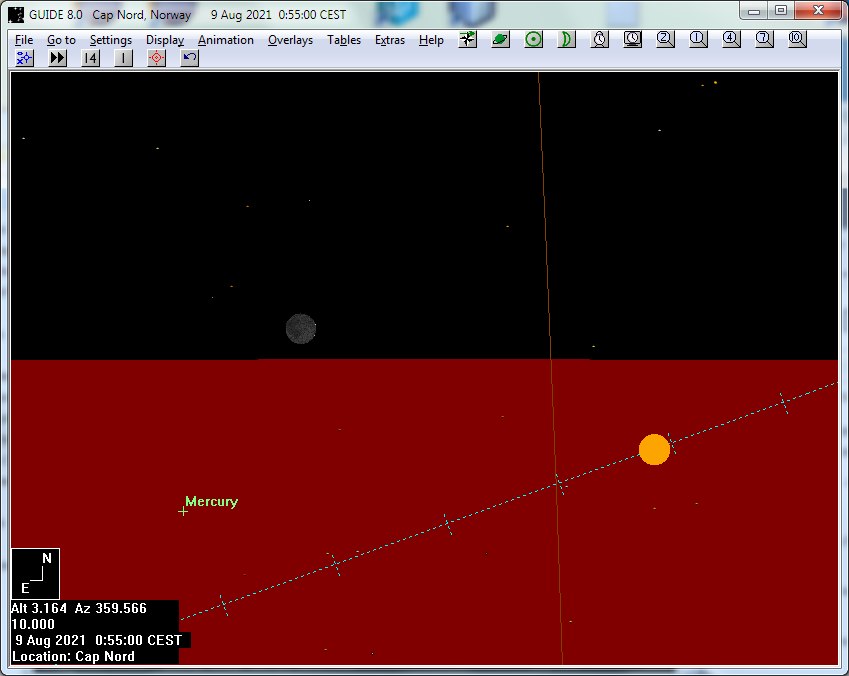On lag time in crescent observations
Version of 2018-10-15, Martin Elsässer
In observations of the young crescent moon after sunset "lag time" is the time difference between sunset and moonset. The longer this value, the more time you have for your observation attempt of the moon.
Lag time is somewhat tricky for very small values: we observe the sun-facing part of the moon where the illuminated part forms the crescent shape, while moonset uses the upper-most edge of the moon. Generally, you have somewhat less time to do your observation than the lag time states.
Some people characterize and compare crescent observations purely by referring to the lag time. I think this is an overly simplified approach ...
More details
The angular width of the visible crescent is defined by:
- The (fairly constant) distance between observer and moon.
- The angular distance between sun and moon ("elongation").
The topocentric distance to the moon only varies by 15%, we will ignore this.
The elongation changes from 0° (during a total solar eclipse) and 180° (close to full moon). At the moment of conjunction the moon can still have an elongation of more than 5° (due to the tilt of its orbital plane vs. that of the earth).
From space
Flying high above our atmosphere with all its scattering of light, only the elongation defines the difficulty of a crescent observation. The lag time would only tell you how much time you had to see the moon and you would like this to be a positive value. For observations in daytime, high in the sky, we can really focus on elongation.
From the ground
When doing observations from the ground ("at the bottom of a ocean of air") things become more complex. The sun illuminates our atmosphere and causes scattering of light on all the dust, water vapor and the air molecules themselves. This scattered light is like a veil of light through which we want to detect the dim light from the crescent. (This veil can be much brighter than the crescent itself at which point you can not see the crescent visually any more.)
Elongation defines the geometry and width of the crescent BUT the position of the moon in the sky (how high above the horizon, how much left/right of the sun) AND the (negative) height of the sun defines how much scattered light there will be at that position. Here the local weather conditions have an extremely strong influence. These local conditions make it so difficult to compare crescent observations from different locations or dates (unless the amount of scattered light is accurately measured).
Lag time is strongly related to these three angles, but in itself not a good summary, even less so when comparing observations from widely different locations. Only near the equator, where the angle of the ecliptic vs. the western horizon is always very steep might the lag time be considerd sufficient.
Conclusion
Outside of the tropics, you really should take more aspects into consideration, lag time alone NOT being sufficient. Near the poles, really interesting situations can appear and lag time can be quite confusing.
Still lag time alone can help in some situations: a lag time of zero or less makes it clear that no crescent could have been observed AFTER SUNSET in that situation as it had already set BEFORE SUNSET.
Utter breakdown of lag time

An example of the situation in high latitudes: the sun does not even set at all for an extended period of time. Lag time could not even be calculated, as there would be no sunset. The image shows the sun at its lowest position on that day, with the moon even lower, but both still above the horizon.

An example of a very weird situation in high latitudes: The sun has finally set at 22:51 (UT+2), hardly dropping below the horizon. The moon is some 7 hours after conjunction, an ultra thin crescent at 5.4° elongation, very impossible to see with the naked eye. But due to the high northern latitude, the moon WILL NOT SET for more than 24 HOURS after that sunset! The image shows its lowest position in the sky, some 2 hours after sunset.
A simple model of Sky Brightness
Back to the start page

